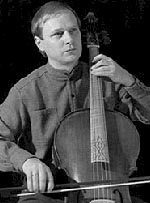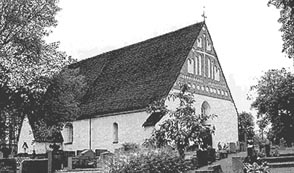Petal 002


The CD was recorded in the magnificent 13th century church of Pernaja,
70 km East of Helsinki.
Bach and Telemann on Violincello piccolo
G.P. Telemann: Fantasia 9, h-moll für Violine ohne Baß
J.S. Bach: Suite 6me à Violoncello solo senza Basso, à cinq cordes
J.S. Bach: Partita 2da à Violino solo senza Basso
Anssi Karttunen, Violoncello piccolo
A recital on Violoncello piccolo is such a rare event, that it calls for some background information. Violoncello piccolo is one of the many forms of cello, that existed in the 17th and the 18th Centuries. It is slightly smaller than a modern cello and it has an added E-string as a fifth string. The repertoire written explicitly for this instrument is not large, the only solo piece is the 6th Suite by Bach. He used it also as an obbligato instrument in 11 cantatas and Händel used it in some oratorios. The only known concerto for the instrument is by G.B.Sammartini. However, the instrument was surely used also to perform many violin and Viola da Gamba pieces, which became accessible thanks to the E-string.
There has been some controversy about the instrument for which Bach's D-major cello Suite was intended. Some have suggested that it was in fact written for the Viola Pomposa, also an instrument of five strings, but held somewhat like a violin. The inscription on the title page of the Suites: « Six Suites à Violoncello Solo senza basso » and the mention « à cinq cordes » before the last Suite should make it clear that a cello of some sort was called for. The only fact that would suggest anything other than a cello of some sort is that in the Prélude Bach goes higher on the E-string than he ever does on the A-string on a cello. In the end the main point is the fifth string and the facility that it brings to the playing.
The fact that the piece is often performed on the normal 4-string cello has actually deformed our idea of the work. It becomes technically so demanding on four strings that the feeling of ease, which is common to all Bach Cello Suites, quite disappears and it sounds like a virtuoso piece.
It is interesting to note that the Allemande of the D-major Suite is by far the longest movement in all the Cello Suites. The Cello Suites survive as a manuscript copy by Bach's wife, Anna Magdalena.
The question what to perform together with this Suite in a recital with Violoncello Piccolo has to be solved. The natural answer is to look into the Violin or Viola da Gamba repertoires. The problem of performing arrangements did not exist in the baroque epoque, everyone readily arranged works for an available instrument. The question of style is much more crucial in baroque music. On this disk I have decided to perform two violin pieces.
The Fantasia by Telemann is one of 12 for the Violin. In instrumental style they are very different from Bach's solo violin pieces. They are all quite short, usually of four movements and with no dance movements. One of the reasons why I want to perform these works is that one hardly ever hears violinists playing this ingenious music.
One has to often answer the question, why the period instruments instead of modern? The choice of instruments is an attempt in getting as close as possible to the sounds, that provoked the composer to write these pieces. Also, the instrument can help in getting rid of some habits that are linked to the modern instrument. In many cases the instrument itself can solve the musical problems, the most obvious example is this suite for violoncello piccolo. The fact that a modern cello allows itself to be played in very different ways than a baroque cello - but not very easily like a baroque cello - creates in fact many musical problems.
There is also the question of performance tradition. I have decided to follow the indications of the manuscripts unless absolutely impossible. This can, of course, be contested, because it seems to some, that Bach, or his wife, were not consistently logical in their phrasings and that there may by some slips of pen as to the notes themselves. There are two answers to this: maybe their logic was not the same unifying logic as in the 20th century, and even in their mistakes these manuscripts are still the closest we can get to the source. I feel that a 18th century mistake is preferrable to a 20th century misconception.
There are only extremely rarely any indications as to the dynamics in these works. Musicians knew all the conventions that applied to performance. One of the simplest conventions of the period was to follow the harmony, a dissonance was always stronger than a consonance. Only in the Prélude of the Cello Suite and the Gigue of the violin Partita he indicates a few times forte and piano for passages that are repeated twice. This must have been such an important indication that it overrides all other conventions. Everything else must have been obvious to the musicians of the period.
The names of the works on this CD are reproduced the way they are written in the manuscripts, reflecting the curious mixture of languages in the Bach family.
The instrument used on this CD is built by Bastian Muthesius in Berlin 1996, it is a copy of a Violoncello Piccolo by Andrea Castagneri.
Anssi Karttunen
